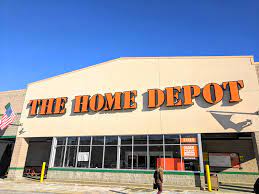
I’ve battled with my fair share of pesky invaders, from stubborn ants to crafty rodents. And let’s face it, we’ve all been there – that moment when you spot a creepy crawler scurrying across your kitchen floor. It’s a common struggle that unites us all in a shared quest: finding effective strategies for managing household pests.
In this article, I’ll guide you through the maze of options available, debunking myths and highlighting proven methods. We’ll explore everything from natural deterrents to professional pest control services, providing you with the knowledge you need to reclaim your home. So, strap in and prepare for a deep dive into the world of pest management.
Overview of Common Household Pests
In this section, we’re diving into some of the usual suspects that violate our home sanctuary. Let’s start acquainting ourselves with these intruders.
Pests: A Direct Threat to Your Healthy Home Environment
Household pests, such as cockroaches, ants, rodents, and termites, can damage property and risk your health. To learn more about Cockroaches, for example, let’s analyze them. The female American cockroach lays approximately 16 eggs at a time and can lay up to 90 egg capsules in her lifetime, which totals around 1,440 young cockroaches. Rather disquieting, isn’t it?
Charmingly, our household pests are not just passionate breeders but also carriers of some nasty diseases. Indeed, pests just love sharing pathogens responsible for conditions like salmonella, the plague, and dysentery. And let’s not even get started on allergens – a fond gift from many a common household pest, including our featured guest, the cockroach.
As homeowners, our first step towards peaceful cohabitation is understanding these unwelcome visitors. In tolerance lies the key to effective pest management, as well as a healthier home environment.
Identifying Common Household Pests
The fight against pests begins with knowing them well. It’s time to take a closer look and learn more about cockroaches, ants, rodents, and termites more in-depth.
Know Your Enemy: Pests to Be Aware Of
Identifying the pests effectively aids in proper management and eradication. Here, we’ll delve deeper into understanding the common culprits – cockroaches, ants, rodents, and termites.
Cockroaches: Creepy Crawlers
Primarily nocturnal, cockroaches thrive in the dark and damp corners of your home. Named for their swift movements when exposed to light, they appear in various shapes, sizes, and colors. A telltale sign of their presence is their dirt-like droppings. Furthermore, they carry an unmistakable musky odor, most noticeable in highly infested areas.
Ants: Tiny Trespassers
Belonging to the Formicidae family, ants are small yet resourceful pests. Differentiating between ant species is key to elimination as they differ in nesting habits and food preferences. For instance, pavement ants build colonies within cracks while carpenter ants frenetically chew through wood.
Rodents: Gnarly Gnawers
Rodents include mice and rats which can be identified by their sharp, protruding incisors. They are infamous nibblers, leaving shredded material and gnaw marks in their paths.

If you are spotting rodent droppings or hearing scratching noises, you’ve likely got a rodent problem.
Termites: Silent Destroyers
Termites, often mistaken for ants, have straight antenna and a distinct waist. They chew through wood, wallpaper, and even flooring completely unseen, causing severe structural damage to homes. Spotting mud tubes or discarded wings is a strong termite activity indicator.
Knowledge of these pests helps formulate an effective pest management strategy, ensuring a pest-free household.
Strategies for Managing Household Pests
Dealing with household pests involves going beyond identification and understanding their behaviors. It’s about actively taking steps to prevent, control, and eliminate these nuisances. Let’s delve deeper into strategies to manage these pesky invaders.
Pre-Emptive Measures to Keep Pests at Bay
Prevention always tops active extermination. Start by sealing entry points, as most pests can squeeze into tiny spaces. For instance, a mouse can fit through a hole the size of a dime. Regularly declutter your home, since clutter provides excellent hiding places and breeding grounds for pests. Food sources and water attract pests, so it’s wise to store food securely and fix leaking pipes or faucets.
Keeping clean surroundings, especially in kitchens and bathrooms, is another effective strategy. Don’t forget the outdoors too, since stuff like yard debris or piled wood can harbor pests such as rodents and termites.
Natural Pest Control Methods
Let’s explore some eco-friendly pest control methods which won’t harm your family or pets. These inclu, natural repellents, decoy plants, and biological control. Cockroaches abhor the smell of citronella, peppermint, and eucalyptus, among others. You can use essential oils of these plants as a natural deterrent. Decoy plants, like marigolds and nasturtiums, can keep bugs away from your actual crops in the garden. Biological control involves introducing natural enemies of the pests, like ladybugs for aphids or nematodes for grubs.
Purchasing Commercial Pest Control Products
When natural methods don’t suffice, commercial pest control products can be necessary. But remember, not all pests react to treatments the same way. What kills ants might not bother cockroaches, and vice versa. For instance, products containing boric acid are lethally effective for cockroaches but might be less impactful on ants or rodents. Also, insect growth regulators hinder pest reproduction, an indirect approach to controlling infestations. Do your research and purchase products that are specific to the pests you’re dealing with. Always read and follow label instructions to ensure safe use. To learn more about cockroaches and their specific control strategies, visit reputable pest control websites or consult professional exterminators.
Expert Tips for Household Pest Management
This section digs deeper, providing expert advice on how you can best manage common household pests. Complex as it may seem, it often boils down to integrating pest management strategies with regular housekeeping and constructive steps to render your home less appealing to pests.
Integrating Pest Management into Daily Housekeeping
Invading pests find cozy corners in cluttered, unclean spaces. Integrated pest management begins with simple yet crucial housekeeping habits.

Firstly, regular cleaning, especially of dark, hidden areas like under the bed or behind the appliances, serves as an effective deterrent. Sweep, mop, use a vacuum cleaner to rid your homes of potential pest habitats. You’d be surprised how fast pests can learn to avoid clean, open areas. Furthermore, limiting access to food sources by storing food in tightly closed containers and managing waste effectively can thwart potential pest invasions.
How to Make Your Home Unappealing to Pests
Curious about making your home a non-inviting place for pests? It’s simpler than you think! Pest scouts often gauge their survival chances upon arrival. A well-maintained, neat, and clean house sends a direct “stay away” message. Plus, amending susceptible spots – such as fixing cracks, gaps, or leaks – leaves no room for these invaders to make camp. Another approach is to incorporate anti-pest plants like citronella or catnip in your garden or as indoor plants. Their strong scent can deter pests like mosquitoes or cockroaches.





